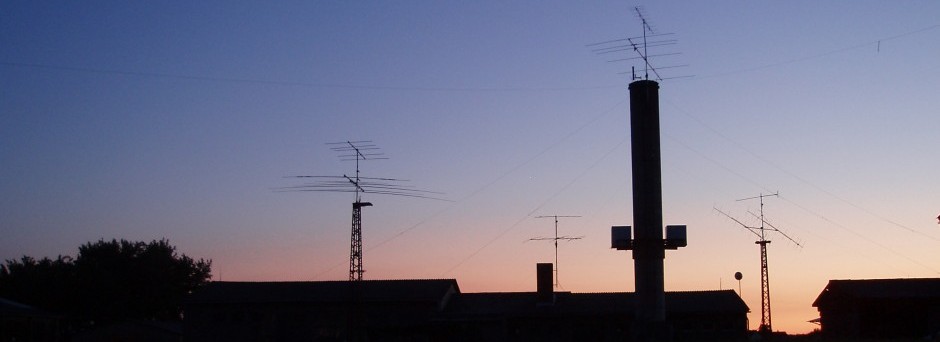After the bad condx last weekend things got much much better this morning. 😎 Had a nice start on 4 m into Greece after arriving at the QTH and it did not take long until also the 2 m band opened via Sporadic-E into southern Italy for the first time this year:
------------------------------------------------------------------ TIME CALLSIGN LOCATOR TX RX BAND MODE PROP. QRB ------------------------------------------------------------------ 09:59 IT9ZVL JM68SA 59 59 2 m. SSB ES 1687 10:00 IKØWGF JN52VC 55 59 2 m. SSB ES 1245 10:01 IUØFNL JN61FU 59 59 2 m. SSB ES 1267 10:03 IWØBJP JN62CK 59 59 2 m. SSB ES 1204 10:04 IW9BJU JM77IA 52 59 2 m. SSB ES 1798 ------------------------------------------------------------------
Four meters was hot late afternoon, too, so I could work some additional fine QSOs there:
------------------------------------------------------------------ TIME CALLSIGN LOCATOR TX RX BAND MODE PROP. QRB ------------------------------------------------------------------ 09:20 SW8YA KN2ØHS 59 59 4 m. SSB ES 1587 16:17 YO9HP KN35BA 59 59 4 m. SSB ES 1252 16:33 LZ1ZP KN22ID 57 57 4 m. SSB ES 1454 16:52 SV2DCD KNØØPL 59 59 4 m. SSB ES 1510 17:08 SV2JAO KN1ØDN 599 599 4 m. CW ES 1530 17:18 YO7BSN KN15PB 599 599 4 m. CW ES 1117 17:27 LZ1AG KN22ID 599 599 4 m. CW ES 1454 17:42 SV7GBR KN2ØIX 59 59 4 m. SSB ES 1569 ------------------------------------------------------------------
Also heard Z35Z (which would have been a new country) quite nicely but condx were gone until we could coordinate “QSX” via the DXcluster. Macedonia may only transmit on 70.275 MHz while Germany has it’s temporary allocation from 70.150 – 70.180 MHz. That means a QSO is only possible using “split”, i.e. listening on .275 but transmitting on .155 and vice versa. A pity, hope to have better luck next time!
Seems I was the first guy, too, to hear the Kuwait beacon on 4 m! I was stumbling across a weak CW beacon signal on 70.169,6 MHz in the middle of our allocation around 16:45z which turned out to be 9K2YM/B on double-hop Sporadic-E! A pity that Yaser was not at the station that time so to QSO over these 3.800 km will have to wait a little longer … 😉
As you can see the total number of QSOs is not that high on 4 m. “Four” is definitely not a band for big runs, at least not from Germany (it’s probably different if you’re sitting in one of the ES hotspots in the Mediterranean). 😉 The regions you can reach from here all only have limited 4 m activity (except the UK which is historically “the” 4 m country). So it is more about all the fascinating propagation modes and openings to explore, even if it means you’re going to work the same guys over and over again. But it was fun listening to the guys down south working all the new DL stations on the band. Seems activity from Germany is very high this year. The availability of commercial radios including the band like the IC-7100 or the the IC-7300 certainly helped it quite a lot to have a go on this very interesting band.
It used to be the same fascination with 6 m some 10 to 20 years ago when it still was “the gentlemen’s band”. Things have changed dramatically, take a listen to some DX pileups on 6 m yourself … it’s just awful, no discipline at all anymore, just like on HF. Thus I enjoy operating on 4 m even more nowadays. To me “four is the new six” … 😉
